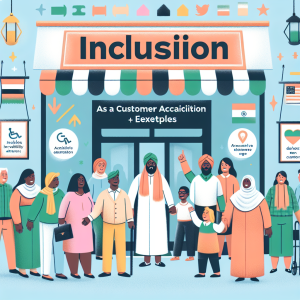What Is Empathy Mapping?
Empathy Mapping is a collaborative visualization tool used to articulate what we know about a particular type of user. It helps design teams and stakeholders to gain a deeper insight into the users’ world, going beyond basic demographics and into the emotional and psychological landscape of the target audience. This tool focuses on capturing the user’s sensory experiences – what they are seeing, hearing, thinking, and feeling – thereby offering a comprehensive view of their experiences and motivations.
The Importance of Empathy in UX Design
The significance of Empathy Mapping in UX design cannot be overstated. It serves as a reminder that behind every user interaction lies a human being with unique thoughts, emotions, and needs. By fostering empathy, designers are better equipped to create solutions that are not only functional but also truly meaningful to the user. Empathy Mapping ensures that user experiences are designed with a genuine understanding and consideration of the user’s perspective.
How to Create an Empathy Map
The sheet surrounding the user is segmented into distinct areas or quadrants, each marked with a category that delves into the user’s external experiences and internal thoughts: their actions, observations, auditory experiences, thoughts, and emotions, along with their challenges and achievements. Collaboratively, the team populates these sections, leveraging their understanding of the user and insights obtained from research.

Photo credit: David Gray, Gamestorming
Creating an Empathy Map is a straightforward process that brings immense value to the design phase. It typically involves four key steps:
- Gathering Insights: Start with qualitative data from user research, interviews, and personas.
- Sketching the Map: Use a large canvas to draw sections for ‘Says’, ‘Thinks’, ‘Does’, and ‘Feels’. Place the user at the center of this map.
- Filling the Canvas: Populate each section with insights, focusing on capturing the essence of the user’s experiences and emotional state.
- Drawing Conclusions: Analyze the completed map to distill actionable insights that will inform design decisions and strategies.
Empathy Mapping Template
Here are some free empathy mapping templates to get you started:
- Empathy Map Template From Miro
- From Mural
- Use this empathy map template to develop a deep, shared understanding and empathy for other people.
- Use this empathy map template to develop a deep, shared understanding and empathy for other people.
The Impact of Empathy Mapping on Design
The implementation of Empathy Mapping can have a transformative effect on the design process and outcomes. By providing a vivid portrayal of the user’s experience, it helps designers and stakeholders to align around a common understanding of the user. This alignment is crucial for developing solutions that address real user needs and challenges. Moreover, Empathy Mapping can reveal unexpected insights, opening up new avenues for innovation and problem-solving.
Empathy Mapping vs. Journey Mapping
It’s important to distinguish Empathy Mapping from Journey Mapping, as both serve different purposes within UX design. While Empathy Mapping offers a snapshot of the user’s internal state, Journey Mapping outlines the user’s entire experience with a product or service over time. Both are essential, but Empathy Mapping is particularly valuable for delving into the user’s mindset and emotional journey.
Tips for a Productive Empathy Mapping Workshop
Focus on Understanding, Not Perfect Placement It’s common for participants to ponder over the exact placement of insights on the Empathy Map (e.g., “Is this a pain or a feeling? Did the user see this, or hear it?”). When working in groups, you’ll notice different interpretations of where things should go for the same user. This variation is perfectly fine. The primary aim is not to categorize everything flawlessly but to deepen your understanding of the user.
Concentrate on Relevant User Perceptions
The goal of this activity isn’t to catalog every single emotion or behavior of the user. Instead, it’s about zeroing in on aspects of the user’s perceptions that are directly relevant to the project at hand. Aim to grasp the user’s perspective in a way that’s meaningful to your project, avoiding the trap of diverging into less relevant details.
Tailor the Map to Fit Your Needs
Feel free to modify the Empathy Map to better suit the specific requirements of your session, the particular persona you’re working with, or the data you have at your disposal. For instance, if you’re focusing on a persona who is a purchasing manager in a B2B setting, it’s possible that emotional responses are less emphasized or not as clearly identified in your research. Adjust the categories as necessary to make the workshop more effective and the outcomes more actionable.
Utilize the Empathy Map Canvas
For a structured approach, consider using the Empathy Map Canvas, available for download as a PDF. This template, featured in David Gray’s “Gamestorming: A Playbook for Innovators, Rulebreakers, and Changemakers,” offers a solid foundation for your empathy mapping session, guiding you through the process with a clear framework.
These tips are designed to ensure your Empathy Mapping session is not only productive but also deeply insightful, helping you and your team to truly connect with and understand your users.
Helpful resources:







